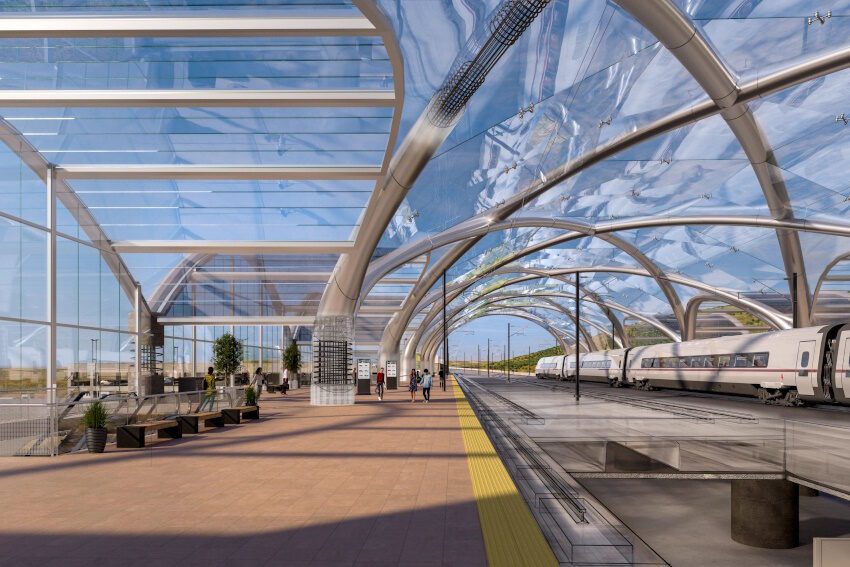Uncategorized
The Digital Crossroads: Why Infrastructure Leaders Must Choose a New Path Right Now
For decades, infrastructure delivery has followed a predictable path: plan, design, bid and build. Sprinkle in some technology where it fits (think building informational modeling, sensors, or drones) and hope for marginal gains.But today’s infrastructure challenges are exposing the limits of this approach. The moment we are in is no longer about incremental isolated improvements. It is about a rethinking of the core: We must redesign how infrastructure is delivered from the ground up, using digital as the foundation, and NOT as an afterthought.This isn’t just a curve in the road, but a fork in it. One path keeps technology at the edges, a collection of tools for specific phases. The other path requires a full digital reinvention of the project lifecycle—from planning and design through construction, operations, predictive maintenance and capital renewal.This transformation is not hypothetical. The tools are here. Forward-looking infrastructure owners are already using enterprise-wide digital twin platforms to simulate construction schedules, optimize HVAC performance in real time and anticipate maintenance needs before failures. They see measurable impact in reductions in lifecycle costs, increases in asset uptime, longevity of asset investments and faster project delivery by months, not days.That path demands new thinking from most infrastructure owners, program managers and construction leaders. It means shifting from:
Fragmented project teams to platform-based collaboration
One-off digital pilots to enterprise-wide transformation
Static designs to adaptable, data-rich systems
Herein lies the tension: the technology is ready, but the systems, processes, and governance models are not fully linked and used. Technology won’t transform infrastructure delivery … leaders with vision and commitment will.But leadership, alone, is not enough. To truly reimagine infrastructure, we must also reimagine the data estate, which is the foundational layer that underpins every digital and operational decision.Infrastructure today is hampered not by a lack of technology, but by a lack of connected, reliable data. Design files live in one system, sensor feeds in another, maintenance records in spreadsheets, or worse, on paper. This fragmentation limits not only visibility, but also the effectiveness of any artificial intelligence or analytics effort. We cannot drive intelligent outcomes from disconnected inputs.What’s now emerging is a new paradigm: a unified data estate; not a BIM model or a patchwork of point solutions and spreadsheets, but a platform enabled via enterprise-grade Digital Twin technology. These platforms bring together spatial data (what and where), static data (model/ make serial number, insurance record, warranty, work tickets, what’s inside, how it is to operate, how it is serviced, and who last fixed it), and live data (what’s happening now, what happened in the past, what might happen in the future) into a single, dynamic system of reality. When this paradigm disrupts the industry and becomes mainstream, gone are the days of a system of record!When coupled with Operational AI, this unlocks a shift from reactive to proactive operations:
Real-time optimization of equipment and energy performance.
Condition data-based maintenance that prevents failures before they occur.
Adaptive use of space and resources, informed by actual occupancy and usage patterns.
Capital planning powered by forward-looking simulations and risk models.
AI-based capital investment recommendations that would triage prioritization based on corrective maintenance records, condition assessment data and the asset’s lifecycle.
This transforms infrastructure into something fundamentally new: not just a set of physical assets, but a learning system— one that gets smarter over time and delivers measurable benefits across cost, uptime, sustainability, and service delivery. The implication is profound: the future of infrastructure will be won by those who treat data not as a byproduct, but as a core requirement for each operating asset and importantly partner with technology providers to recreate the future of infrastructure.We are no longer just managing buildings and systems. We are managing intelligence. In doing so, we are redefining what it means to operate, optimize, and lead in a digitally defined era.The window for incrementalism is closing. Infrastructure leaders will be defined not by what they build, but by the decisions they make to link data throughout project lifecycle, starting now.Khaled Naja is chief executive officer of Core Group Partners. He is a veteran engineer and construction technologist, a member of the National Academy of Construction and a globally recognized C-suite executive.
